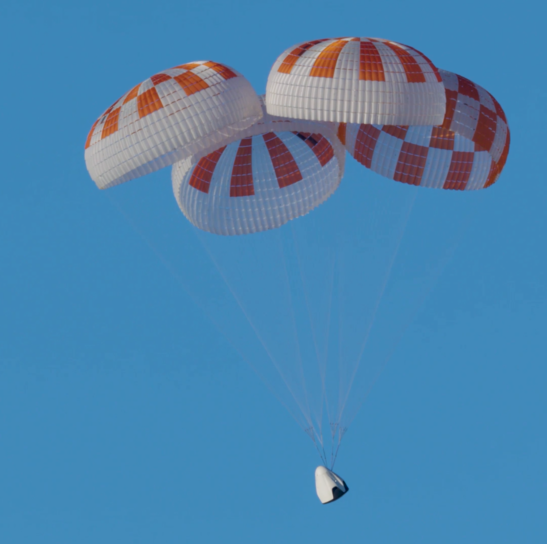
As part of NASA’s Commercial Crew Program, SpaceX has been developing and testing the Crew Dragon parachute system, which is comprised of two drogue parachutes and four main ring-sail parachutes—the same type of parachutes that have been commonly and successfully used for human spaceflight in the past.

In the last four years, SpaceX has completed 30 drop tests and 18 system-level tests of their parachute system, including the successful Demo-1 mission flight test. Through this test campaign, the SpaceX team, in partnership with NASA, has gained insight that could change the way parachutes are developed, tested and integrated into spacecraft design. Throughout this process, NASA has shared lessons learned from its own human spaceflight heritage to assist in parachute development.
One of the most relevant benefits originating from the rigorous, multi-year parachute testing campaign is a better understanding of how to safely design and operate parachute clusters. Specifically, NASA and SpaceX now have greater insight into what is termed “Asymmetry Factor,” an integral part of how safety in design is measured and weighed. This asymmetry factor is an indicator of uneven load distribution between individual suspension lines attached to the parachute canopy. As a cluster of parachutes is deployed, the first parachute to open may crowd or bump others as they open up, causing an uneven load distribution on the main parachutes. If the lines or the joints are not designed to account for the unevenness or asymmetry, they might get damaged or even fail.

In April 2019, SpaceX performed a developmental test designed to simulate the loss of one of its four main parachutes. During the test, there was an unexpected failure which has offered a unique insight into parachute loading and behavior. The test results have ultimately provided a better understanding of parachute reliability and caused a closer examination of the current industry standard used to calculate the asymmetry factor.
SpaceX is using this new data to calculate structural margins and influence parachute design. The unique results allow more accurate prediction of reliability in the flight parachute configuration. In fact, this new data further verified SpaceX’s most recent successful developmental test, which simulated a pad abort, where the vehicle is tumbling at low altitude before parachute deploy.
Through testing, SpaceX has sought to better characterize margins on their current and future parachute designs, using more robust materials, operational mitigations, and continuation of model refinement based on data from almost 50 recent tests and counting, 19 Cargo Dragon parachute landings, and the successful Demo-1 mission, to ensure that Crew Dragon has the safest parachute design possible. Additionally, these new findings are being shared within NASA to ensure that all human spaceflight applications are assessed for adequate margin and reliability.
NASA’s Commercial Crew Program is a public-private partnership with Boeing and SpaceX to take the experience of NASA and couple it with new technology and designs being pioneered by private industry. Together, we are making space travel safer and available for all. This is one of many steps that advances NASA’s goal to return human spaceflight launches to U.S. soil on commercially-built and operated American rockets and spacecraft and prepare for a human presence on the Moon with the ultimate goal of sending astronauts to Mars.
